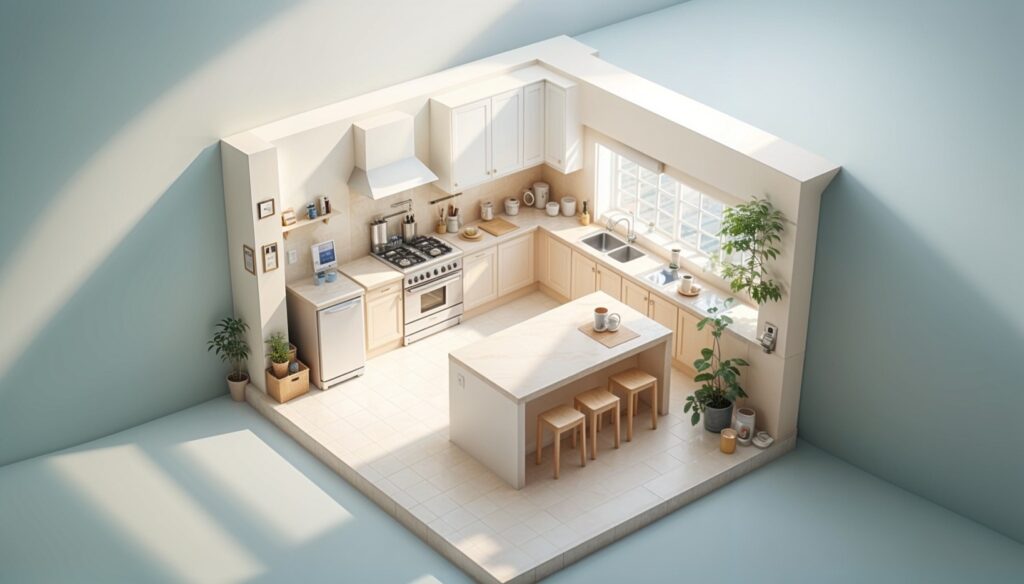The Problem: Pinterest Can’t Measure, Match, or Tell You What Works in Your Home
Let’s be honest—most homeowners walk into renovations armed with inspiration but no actual plan.
You’ve saved 40+ photos of tile backsplashes. You’ve read all the blogs. You’ve even picked up a few tools and started your own DIY home projects. But here’s the truth:
What looks good on a screen doesn’t always work in reality—especially not in your kitchen or bath.
What you’re missing isn’t motivation. It’s real-world perspective. And that’s exactly what home remodeling showrooms provide.
The Solution: Stop Guessing, Start Seeing (and Touching)
A showroom lets you:
- See materials at scale—no more squinting at a 4×4 tile sample
- Touch surfaces—because durability matters as much as design
- Compare finishes side-by-side under real lighting
- Walk through real-life layouts that show how cabinetry, countertops, and lighting actually flow
This is essential when you’re trying to bring high-end looks to life—especially when following curated Luxury Kitchen Trends that rely on texture, tone, and clean lines.
The Real Cost of Skipping the Showroom
Without the insight a showroom visit provides, here’s what often goes wrong:
- Mismatched tones between cabinets and countertops
- Poor spatial flow that looks good on paper but fails in function
- Overinvestment in trendy finishes that don’t hold up over time
- DIY installations that fall short due to unclear specs or incompatible materials
Even the most confident DIYer benefits from seeing real setups before taking a drill to drywall.
Showroom = Decision Confidence
Homeowners who visit remodeling showrooms before committing to materials:
- Spend 22% less on average correcting design mistakes
- Report 35% higher satisfaction with the final result
- Complete their projects faster, with fewer revision delays
In short: showroom visits are strategic, not just stylish.
How to Maximize a Showroom Visit
- Bring photos of your space
- Measure walls, appliances, cabinet runs
- Prepare a list of must-haves and “nice-to-haves”
- Ask questions—especially about product compatibility for DIY use
- Take note of layout flow, lighting positioning, and material transitions
Then, use what you see to finalize your renovation plan—grounded in real materials, real dimensions, and real-life durability.
Final Word from Bryan
You wouldn’t build a house without a blueprint—so don’t remodel without context.
A visit to home remodeling showrooms gives you clarity, confidence, and a concrete sense of how your dream space will actually function. Whether you’re chasing down luxury kitchen trends or managing your own DIY home projects, the showroom is where ideas become reality-ready.




